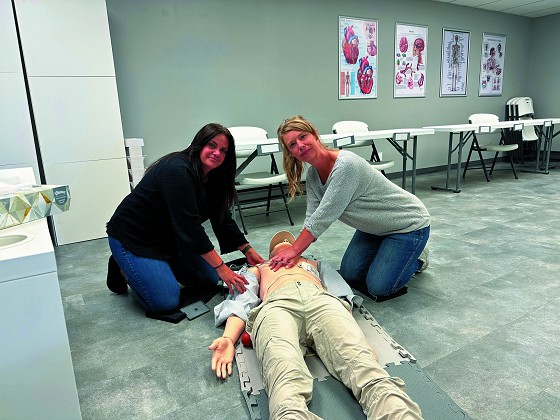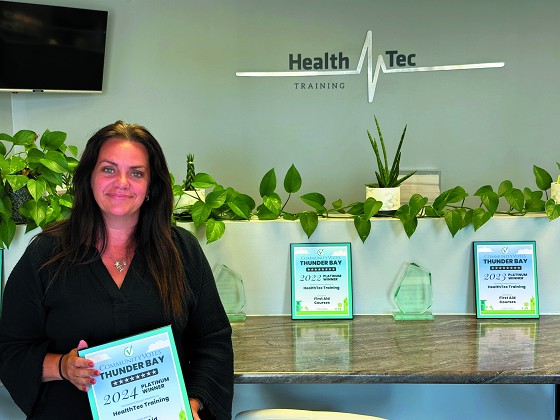First Aid and CPR Training Is Important!
by Scott A. Sumner
Tamara Mroz is a Registered Practical Nurse and has been the owner/operator of Health Tec Training for 7 years now.She previously worked at Confederation College in the areas of PSW and Dental Assisting and at the hospital and long term care facilities.

“ I started doing First Aid and CPR training in a little place on Victoria Ave for my own students from the college.Then more people were interested in the courses so we quickly needed to move to a bigger place on Squier Street for 3 years. During Covid we had to go bigger in size due to social distancing, so it worked out well and we moved to our current location at 1112 Russell Street. Our location is bright and clean and was totally changed to meet our needs.We are even out growing our current space with a maximum class size of 18 people, so we may have to move again.” said Tamara Mroz.
“ First Aid and CPR training is kinda our number one thing. The workplaces need to have so many people trained in first aid, based on the number of employees they have, which is a requirement. Some of our corporate clients train every employee that comes in- they give them the option for the training. We do standard First Aid and CPR together in a course” said Tamara..
First Aid covers anything from broken bones, wound care, stab wounds, crush injuries, simple things like bee stings, how to use puffers for asthma, epi pens, child birth - there is a huge range of subjects. You could use this training at home even more so than the workplace so it is too bad more people don't take it, according to Tamara.

“ You may have had an experience with someone who is not breathing. The purpose of CPR is something you do to keep that oxygenated blood circulating until somebody comes with an AED to shock the heart. The AED is what you need, and need quickly, to bring that person back and it is time sensitive. So you don't delay in calling 911 to get the AED quickly if you don't have one.” noted Tamara. “ Once you heart is not beating it is different for everyone as to how long you have to get shocked.The AED is the number one priority- to shock the heart- you do need a shockable rhythm.”
“ We teach people the why of something so you remember, not justmemorizing something. If you have the tools like a mask you can do breaths and chest compression. If you are just doing chest compression there is a natural input of air as well. The chest compressions should be at least 2 inches or 5 cm. under the armpit and straight across, almost 1 or 2 per second.” said Tamara.
AED's are for cardiac arrests. Heart attacks are when blood is not getting to part of the heart. Basically part of the heart starts to die as it is not getting the oxygen because of a blockage. You can still be walking around and talking during a heart attack. If someone has cardiac arrest they are non responsive and that when the AED comes in noted Tamara.
At Health Tec Training their courses are blended with part completed online and then 1 day in the classroom.The online course allows you up to 4 weeks to complete. After completing this their mannequins in the classroom setting will tell you if you are doing it properly, say too fast or too slow.
Over their history, Health Tec Training has done training of around 10,000 people with their courses.
I think getting this type of training is very important for every person!
The Health Tec course information is on their website www.healthtectraining.ca










